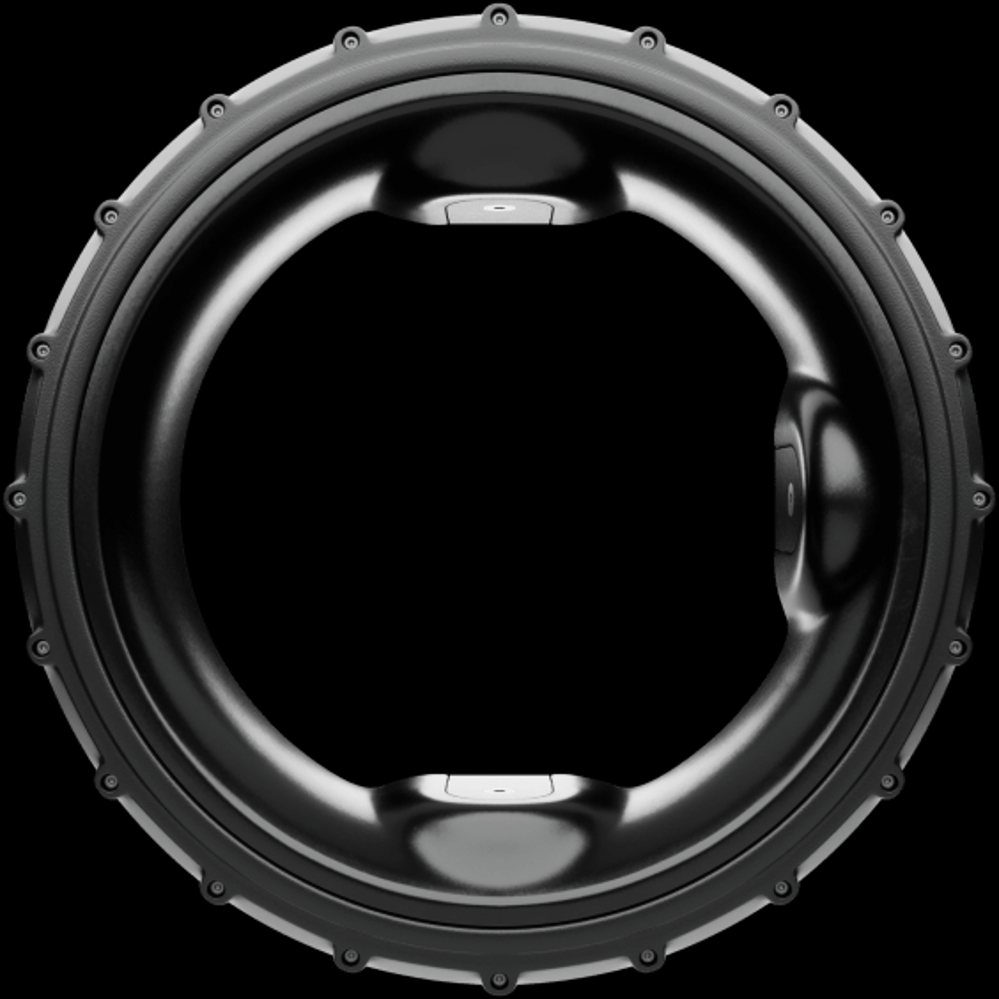
Sign up for daily news updates from CleanTechnica on email. Or follow us on Google News!
Conceptually, there are a lot of similarities between an electric motor and the wheel of a car. Both have parts that rotate and parts that remain stationary. Many have wondered whether it might be possible to make in-wheel motors that could power an electric car. If so, lots of space would be freed up inside the vehicle, space where regular electric motors, gearboxes, differentials, and driveshafts normally reside. Think of all the extra passenger or cargo space there would be if those things could be eliminated by moving the motors to the wheels.
That’s the theory, anyway. In reality, in-wheel motors present some serious challenges, not the least of which it the problem of unsprung weight. For the purposes of this discussion, assume an in-wheel motor weighs 100 pounds. If you add 100 lb to the passenger compartment, not much changes in how the car drives because that extra weight just adds to the total weight of the car. Unsprung weight refers to how much the components weigh that move up and down while you drive, things like, wheels, tires, brake rotors, calipers, dampers, and the assortment of suspension components that keep the wheels attached to the car.
If more weight gets added to that part of the car, now the suspension components have to be stronger, which means they have to be heavier. What’s worse, adding extra weight will cause the ride and handling of the car to deteriorate. There is no free lunch in the world of chassis dynamics, sadly. Still, if the improvements outweigh the detriments (no pun intended), in-wheel motors might be useful in some instances.
In-Wheel Motors At CES 2025

Two companies brought their in-wheel motors to CES 2025, where they are hoping to attract interest from car companies and automotive suppliers. One is called Donut Lab, which this year is showcasing its second generation motor that it claims is significantly lighter than the original design.
The new Donut Lab motor fits inside a 21-inch wheel and promises some impressive performance. For instance, each one can produce up to 630 kilowatts (845 horsepower) and 4,300 newton-meters (3,171 pound-feet) of torque. Imagine four of those puppies bolted onto your favorite ride! But what is most impressive about these Donut Labs motors is that they weigh only 40 kilos (88 pounds), which is about two-thirds less than a traditional rotor and stator in an electric motor, according to CNET.
Less weight in an electric car means more range, which is a good thing. Having no internally mounted motors and drive shafts would free automotive designers to re-imagine the passenger and cargo areas of a car in ways never before possible. Having individual motors in each wheel would also create new opportunities for precise car control, since each could be programmed to provide the precise amount of torque or regenerative braking needed to meet the requirements for every driving situation. Donut Labs also claims its motors will cost up to 50% less to manufacture and will use far fewer parts. That in turn should lower the cost of cars when they are new, and the cost of maintenance over the years.
In addition to the 21-inch wheel for automotive applications, Donut Lab showcased an in-wheel motor tailored to the needs of Class 8 tractors. It also is 21 inches in diameter but has a lower operating RPM, 200 kW of power, and 3000 Nm (2,212 lb-ft) of torque per wheel. The lineup will also include a 15 kW, 12-inch motor for scooters and a 3 kW 120mm drone motor. The company’s 150 kW, 17-inch motorcycle motor is already being used on the road to power a few boutique electric motorcycles, which suggests the odds of seeing this technology used in a production car in the future are pretty good.
Elaphe At CES 2025
Elaphe, a company based in Slovenia, is also at CES 2025 with its Sonic.1 high performance in-wheel motor optimized for driving the front wheels. The company says the Sonic.1 is the world’s first and only direct drive in-wheel motor compatible with high performance brakes. It integrates large 400 mm (15.7 inch) brake discs into a 21-inch rim, making it ideal for the front wheels of high performance vehicles where space and weight are crucial factors. The Sonic.1 delivers a continuous output of 200 kW per wheel and achieves peak outputs of up to 255 kW. It offers a continuous torque of 1,000 Nm (736 lb-ft) and a peak torque of 1,700 Nm (1253 lb-ft) per wheel. The maximum speed is 3,500 revolutions per minute. With rear-wheel drive configurations, the Sonic.1 can offer up to 1 MW of power.
The Elaphe Sonic.1 front axle package includes two in-wheel motors as well as two onboard SiC inverters supplied by McLaren Applied. Thanks to ‘Elaphe Traction Control,’ the new in-wheel motor is said to enable 10% faster acceleration and a 15% shorter stopping distance compared to conventional e-axles. It also offers up to 15% higher vehicle lateral acceleration with torque vectoring. It is available now for battery-electric cars as well as hybrids, according to a report by Electrive.
Readers may recall that the innovative Aptera solar-powered electric car was slated to use Elaphe in-wheel electric motors, but switched to another solution shortly before production began. Several years ago, Elaphe engineers installed their in-wheel motors in an Audi R8 e-tron prototype and beat the factory spec car in a 0 to 60 mph sprint. For that project, the four in-wheel motors had a combined 6,000 Nm of torque and 440 kW of peak power. All of the power electronics, control, and motors used for the R8 project were developed and built by Elaphe in-house.
In-wheel electric motors are not the perfect fit for every application. Heavier suspension loads would not be ideal in a Miata, for example, but less of a problem for a commercial vehicle such as a delivery van or tractor. There are rumors that Ford may be considering them for use in future version of the F-150 Lightning. Cost will be an important factor in any decision to use them, followed by durability and serviceability. Fewer parts mean fewer things to break, which should translate to lower maintenance costs. Less expensive motors would allow manufacturers to sell their electric vehicles for less — an important consideration today when EVs tend to cost more than conventional cars. The idea of in-wheel motors is very appealing and it seems safe to assume they will find their way into production vehicles sooner rather than later.

Chip in a few dollars a month to help support independent cleantech coverage that helps to accelerate the cleantech revolution!
Have a tip for CleanTechnica? Want to advertise? Want to suggest a guest for our CleanTech Talk podcast? Contact us here.
Sign up for our daily newsletter for 15 new cleantech stories a day. Or sign up for our weekly one if daily is too frequent.
CleanTechnica uses affiliate links. See our policy here.
CleanTechnica’s Comment Policy



